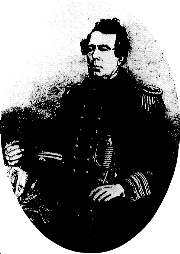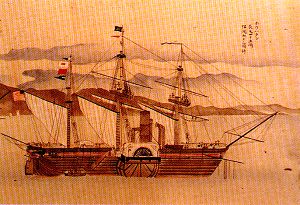- Yokohama-shi Top Page
- Sightseeing and events
- Port of Yokohama
- Experience Yokohama Port
- Learn Yokohama Port
- History of Yokohama Port
- Go to Minato! History of Yokohama Port (1)
Here's the text.
Go to Minato! History of Yokohama Port (1)
Last Updated July 31, 2024
![]() History of Yokohama Port (transition chart, chronological table, for the general public)
History of Yokohama Port (transition chart, chronological table, for the general public)![]() Opening of Port-Civilization and Civilization
Opening of Port-Civilization and Civilization![]() Municipal Organization-Reconstruction of the Great Kanto Earthquake
Municipal Organization-Reconstruction of the Great Kanto Earthquake![]() -World War II
-World War II![]() World War II period of high economic growth
World War II period of high economic growth ![]() Container Age - Present
Container Age - Present
1.Opening of Port to Civilization
From 1859 to 1888
Ansei 6-Meiji 21
In July 1853 (Kaei era, June 6), Admiral Perry of the United States led a ship of four coughs and arrived in Uraga, and Japan's isolation policy urged him to open a port.

East Ind Fleet
Commander-in-Chief Matthew Calbrace Perry
(London News with Pictures, May 7, 1853)
(Yokohama Archives of History Collection)
Until then, Japan had not interacted with foreign countries for a long time except for a small number of countries, such as the Netherlands, but the following year, March 1854 (March 1854), the Shogunate signed the Japan-U.S. Peace Treaty (Kanagawa Convention) with the United States and Japan in July 1858 (18.5).

(Yokohama Minato Museum Collection)
Then, on July 1, 1859 (June 2, 1859), Kanagawa, Nagasaki, and Hakodate (Hadate) were opened to allow free trade with foreign countries.
However, during the negotiations on the Japan-US Osamu Trade Treaty there was no name of Kanagawa or Yokohama in the opening area of Harris, where the Consul General of the United States ( looked at Harris, but the Shogunate proposed the opening of Kanagawa to Harris because it was a place related to the Japan-US Peace Treaty, and it was the closest port to Edo.
However, the Kanagawa that Harris was thinking about was Kanagawa-juku, which is now around Higashi-Kanagawa, Kanagawa-ku, while the Shogunate was thinking about Yokohama. The Shogunate strongly insists on opening Yokohama's port to open the Tokaido post town which has frequent traffic in order to keep foreigners and Japanese away, and unilaterally opened a port in Yokohama.
At that time, Yokohama was a small fishing village with few port facilities, so when it opened, two docks were created near the base of the current Osanbashi.
The ship cannot be directly attached to the wharf, so it anchored offshore, and a small ship called "Hashike" or "K travels back and forth between the land, carrying luggage and people. Was carried.
※The date and date of parentheses up to 1872 (Meiji 5) is based on the lunar calendar.
"Main Imports of this Age"

Cotton fabric (menorimono)
"Major exports of this era"

Raw silk

Tea (cha)
Inquiries to this page
Policy Coordination Division, Policy Coordination Division, Port and Harbor Bureau Policy Coordination Department
Telephone: 045-671-7165
Telephone: 045-671-7165
Fax: 045-671-7310
Email address: kw-seisaku@city.yokohama.lg.jp
Page ID: 577-570-350







